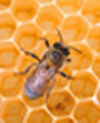
To honeybee or not to honeybee, that is the question?
An investigation of interdependence and survival in the Himalayas and U.S.A.
Created by Ben Zimmerman
McAuliffe Regional Charter Public School
Framingham, MA
| MISSION COMMAND |
| MISSION TWO: Religions |
| MISSION THREE: Honeybees |
| MISSION FOUR: Economic and Social Implications |
| SALUTE |
Five Themes of Geography
It is critical to set a context when building any sort of background knowledge. But what does it really mean to know “where something is located?” A thorough study of geography takes a student beyond “the map” into really understand all the implications of “where something is located?” However, in an era of high standards and expectations there are many locations for students to know. Thus, I am a proponent of teaching world geography through the Five Themes of Geography. I do still regionalize geographic locales of the world but through the auspice of a particular theme(s).
5 Themes
Location
Place
Human-Environment Interaction
Movement
Region
In the case of “To Honeybee or Not…” all five themes of geography could easily be applied. Human-Environment Interaction would be the focus with the central foci on several different tribal colonies of the Himalaya emphasizing their dying cultures, the plight of the Himalayan honeybee, small-scale farming communities of Massachusetts, and the plight of the honeybee in MA and the U.S.A.
Map Skills
Students begin the unit by getting a blank sheet of paper or modified version for those in need. Then students receive specific requirements they will need to know the location of at certain intervals during the unit. A similar example of this lesson can be found here: Big Maps.
Altitudinal Zonation
An additional element that will prove useful to students understanding of the aforementioned Himalayan tribal communities, small-scale Massachusetts farms, and honeybees habitats, is the study of altitudinal zonation. This will help explain why people and honeybees live and/or perish where they do.
Good links for starting a study:
http://www.runet.edu/~swoodwar/CLASSES/GEOG235/lifezone/lifezone.html